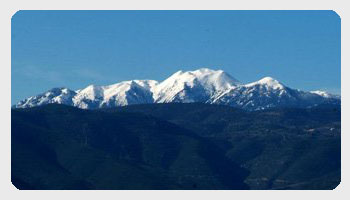Parnonas Mountain is extending in the largeness area of Peloponnese. It is also named as ‘Malevos’. At ancient times it was named as ‘Cronion Mountain’, because according to Greek mythology, the mountain was dedicated to the great Titan ‘Croms’ (Saturn).
It is expanding in an area of two million acres and its highest peak, which has an altitude of 1936 meters, is called ‘Tourla’ or ‘Cronion’. The 86% of its whole area is covered by forests and pastures and the rest 15% is covered by agricultural land. The climate is mild during winter months.
Parnonas Mountain is a quite smooth mountain and has rich flora. In its lower levels, where the conditions are mild, the rarest herbs thrive, which are used for medicines.
Indicatively, the ancient physician Asklipios was used to collecting herbs from this mountain for the production of his medicines.
Needless to say, the area of Parnonas Mountain and the area of wetland of Moustos are both eco-parks and protected zones by European Union in view of their high biodiversity and untouched landscapes. Many species of mammals, reptiles and birds find shelter in Parnonas Mountain. It is stunning that, in this region, which is composed of more than 20 types of habitats, grow many varieties of trees, plants and rare herbs. Some of them are unique, such as juniper forest around Malevi Monastery in Saint Peter Kynouria. Also, other areas, as coastal wetlands with the most prominent lagoon of Moustos, the chestnut forest (in Kastanitsa), and black pine forests, are of great significance for Greece and Europe. Nevertheless, the greatest wealth of region is flora, with a great number of important plant species, many of which are endemic, rare and threatened. Deductively, the area of Parnonas Mountain and the area of wetland of Moustos have been recognized as particularly important for nature conservation, in national and European level with their insertion in European Network NATURA 2000.




